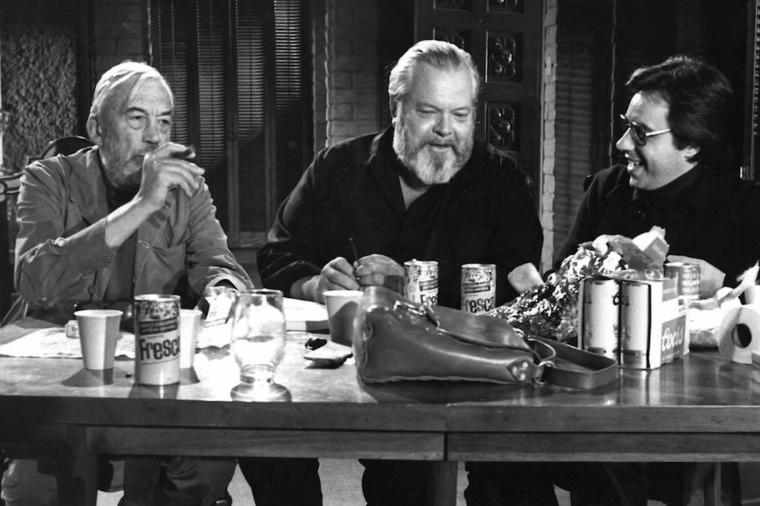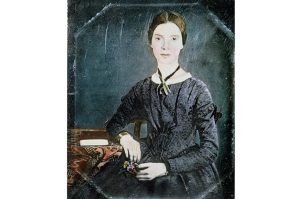‘Have you seen the new Orson Welles?’ is not a question I ever expected to hear. I had heard about The Other Side of the Wind, the film that Welles tried to make after his return to Hollywood in 1970 and failed to finish over the next six years. I had read that Welles’s later career had been marred by uncannily bad luck, just as his early career, from the Bard-on-Broadway of Caesar (1937) to the radio broadcast of War of the Worlds (1938) to Citizen Kane (1941) had been propelled not just by prodigious energy and talent, but also by good luck. And I had read that Welles’s luck had broken in 1942, when RKO butchered his rough cut of The Magnificent Ambersons and, preventing subsequent reconstruction, threw away an hour of footage.
A mountain of footage survived from The Other Side of the Wind. So does a subsidiary pile of legends about why Welles never finished it. As unfinished works go, it would be the cinematic equivalent of Dickens’s The Mystery of Edwin Drood, where it not that authors keep finishing Edwin Drood, while no one could finish The Other Side of the Wind. As ever with Welles, the problem was money.
If you ever find yourself playing ‘Six Degrees of Kevin Bacon,’ remember that Orson Welles and Ayatollah Khomeini are linked by Mehdi Bushehri, brother-in-law to the last Shah of Iran. Bushehri had part-financed the film. By 1979, when the Iranian Revolution broke out, Welles had finished some 40 minutes of his film. The ayatollahs impounded the film as part of the old regime’s assets. It took 20 years to unravel the litigation. According to the accompanying documentary, Morgan Neville’s They’ll Love Me When I’m Dead, Welles’s girlfriend and co-writer Oja Vader, who also starred in the film, delayed its completion and release for nearly another two decades by refusing to settle for a deal.
‘If you want a happy ending,’ Welles said, ‘that depends, of course, on when you stop your story.’ Citizen Kane, for all its biographical intricacy and technical innovation, failed to recoup at the box office, but it still runs on, feeding the legend of Welles as the American auteur. The Other Side of the Wind might have been a happy ending for Welles and the studio system. By 1970, Welles had not made a film for a Hollywood studio since A Touch of Evil in 1958. But the sudden shift in generational taste signaled by the success of Bonnie and Clyde and Easy Rider forced the studios to gamble on the ‘New Hollywood’ directors like Francis Ford Coppola, Martin Scorcese, Peter Bogdanovich (The Last Picture Show), and Michael Cimino (The Deer Hunter).
The new generation worshipped Welles, but Welles, judging from The Other Side of the Wind, despised the new Hollywood as much as he did the old. The Other Side is a mockumentary, a satire, and an exposé — of Welles as Ozymandias, and of the business that brought him low. A Hemingway-esque director, Jake Hannaford (John Huston), is making a film called The Other Side of the Wind without studio backing. To raise money, Hannaford screens rough cuts at his seventieth birthday party. The opening titles have told us that Hannaford will be killed in a car crash that night. He cannot make his own luck. He fears the death-in-life of not making films, but the business of making films will kill him.
Many of Welles’s cast are directors, and many of the fictional characters are recognizable. Bogdanovich, who tied interviews with Welles, plays Brooks Otterlake, who tapes interviews with Hannaford. Pauline Kael, who angered Welles by relegating Citizen Kane from high to popular art, is spoofed as the film critic Juliette Rich (Susan Strasberg). Hannaford’s movie inflates the pretensions of Antonioni’s Zabriskie Point (1970) to absurdity. The film is a furious attack on film itself. It has none of the affection visible in Spinal Tap or Day For Night, and touches of evil as a documentary of nastiness.
Welles, who kept returning to Shakespeare on lower and lower budgets, exposes corruption as Hamlet does, by setting a play within a play. Welles filmed the ‘fake’ Other Side in lush 35mm color, and the ‘real’ Other Side in a medley of formats: 16mm, 8mm, color, black-and-white. This makes the imagery of the visual dream richer than the reality of its framework. But the content of the dream lacks the tangled, rambling complexity of the ‘real’ world of the film business. The Sixties’ dream is shown to be vacant, if not absurd. But the Sixties’ dream is what allowed Welles to make this film in the first place. Made as a contemporary satire, it now seems like a time capsule. It is not a great film, but it is flecked with a bitter kind of greatness. Welles had not lost his eye and rhythm. The split-screen candor of Citizen Kane recurs in sordid Seventies’ style. The grandeur of ambition feeds the grandiosity of Hannaford who, like Welles, is forcing himself up the food chain of a business now trading in explicit sex and violence.
‘There is a destiny that shapes all our ends, rough hew them how we will,’ Hamlet says. The destiny that shapes the film business is commercial, and Welles could not make the cut within the rough-hewn certainties of a business that insists on the bottom line and the happy ending. He ended up trying to finance his films by doing adverts for Paul Masson’s California Carafes and, inevitably, Hamlet cigars. This is the paradox from which Welles never escaped, and which The Other Side of the Wind explains. He made his own luck, and that meant he could not have a happy ending. Then again, neither can The Mystery of Edwin Drood, whichever way it is written.
Dominic Green is Life & Arts Editor of
Spectator USA.


















